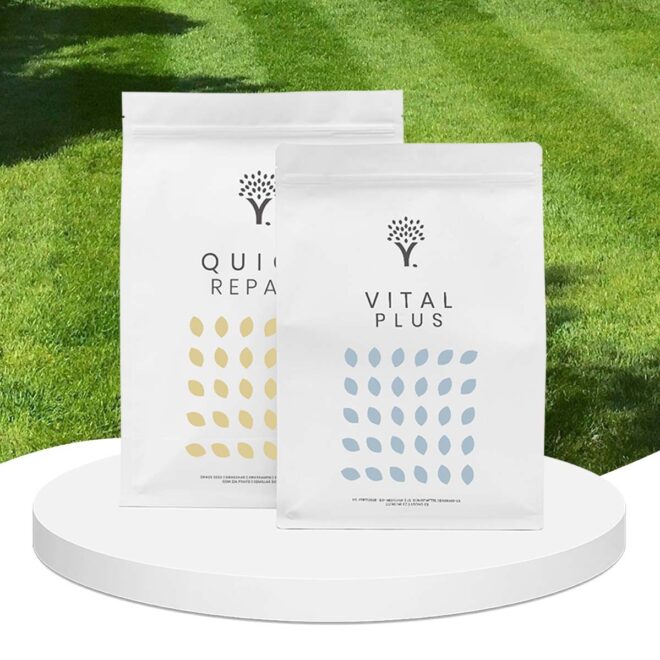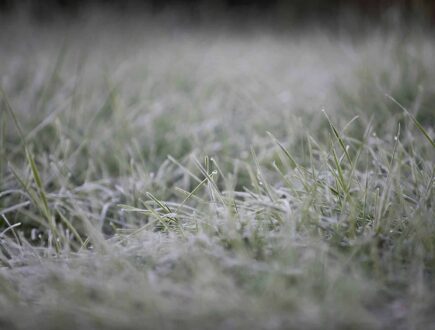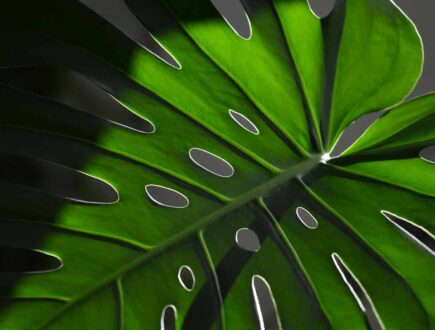Log in or create new account to save this product to your wishlist.

How to Revive Your Lawn After a Heatwave
Persistent drought causing yellow patches on your lawn? Find out how to restore your grass after a heatwave with these expert tips and tricks.
🌱 All important maintenance moments for your lawn during the year. Leave your email and we will send you the lawn calendar for free.
Enter your email
Receive the lawn calendar in the mail
Enjoy a green lawn all year round!
The summer heat can be harsh on your garden, leading to persistent drought conditions. Extended periods of high temperatures and minimal rainfall result in yellow patches in the grass and a brownish tint on your lawn. How can you revive your lawn after such a heatwave? Find out here!
Don’t mow the grass too short
During and after a dry period, it’s best not to mow the grass too short. Longer grass is less vulnerable to scorching. Additionally, it retains moisture longer, which is very welcome during a heatwave. If the grass has turned yellow due to the heat, it’s better not to mow it at all. This will do more harm than good. First, ensure that the grass regains its green colour.
Water, water, and more water!
What does your garden really need now? Water, and lots of it. The yellow-brown patches are due to a lack of water. You might think: I’ve watered my lawn often this summer, so why is it still dry? This can be due to scorching. If the sun shines on your lawn all day, the water evaporates before it reaches the roots. This is known as scorched grass, and it’s quite common, even if you’ve been watering.

Our watering tips
- Water your lawn thoroughly twice a week after a heatwave. Run the sprinkler for 20-30 minutes.
- The best time to water is in the morning. This allows the water to soak into the ground before the sun reaches its peak and evaporates it, leading to scorched grass. Watering in the evening means the grass won’t be dry before nightfall, which can lead to diseases and mould.
- The roots need to get wet, not necessarily the blades. In fact, the blades can bend under the weight of water from above. Therefore, water close to the ground, for example, with a drip system.
- Use a sprinkler with a gentle spray. After a warm period, the grass is extra vulnerable, so a gentle approach is needed.
Give your lawn a boost
Is water alone not enough? Give your lawn a boost by fertilising it. Choose a fertiliser with a higher potassium content. Potassium improves cell structure and increases the grass’s resistance. This will really help your lawn recover. Another plus: you’re also preparing your lawn for autumn and the coming winter.

Fertilising in 5 simple steps
Are you ready to get started? Follow this step-by-step plan for the best results.
Step 1: Choose the right moment
Wait to fertilise until the first signs of rain appear, or better yet, just before a shower. Make sure the grass is dry when you fertilise.
Step 2: Prepare your lawn
Remove leaves and twigs from the lawn and mow the grass.
Step 3: Calculate the required amount
Weigh the correct amount. Multiply the number of square metres of lawn by 25 grams, and you’ll know how much fertiliser you need.
Step 4: Distribute the fertiliser
Divide the fertiliser into two equal parts. Spread the first part lengthwise and the second part widthwise.
Step 5: Water
Now, wait for that rain shower. If the rain is delayed, water the ground yourself to activate the fertiliser. Do this with a gentle spray so the granules don’t move.
Repair your lawn with our Dry Lawn Restore Kit
Want to easily revive your lawn after this dry summer? You can with the Dry Lawn Restore Kit. The kit includes the Vital Plus fertiliser and Quick Repair grass seed. The recovery fertiliser provides a nutrient-rich soil and all the nutrients your lawn needs to develop well. This results in a lawn that quickly fills in, keeping moss and weeds at bay.

- Everything you need to professionally restore your lawn after drought
- Prepares your lawn for overwintering, reducing moss and weeds
- See amazing results within seven days
The Quick Repair grass seed in this kit is coated with our AquaSaver coating, which ensures that water doesn’t stay on top of the grass and evaporate but is instead absorbed by the dry soil. This saves 50% water and gives you 38% more grass in the first 7 days after sowing!
Are you ready to restore your lawn?
Now you know how to restore your dry lawn to its former glory!
In case you are keen to learn more about lawn maintenance or other gardening tasks, be sure to read our tips.
And if you have any questions or tips for us, leave a comment.
Happy gardening!
-
Zero-Waste Gardening – This is How You Do It!Did you know that the average person wastes between 100 and 150 kilos of food every year? That's why the concept of zero-waste gardening is becoming increasingly important for environmentally conscious gardeners that like to do their gardening greener.Read more
-
How to Master Tree Pollarding: A Practical GuidePretty dense! What might be an insult to some, is certainly a compliment to trees. Through pollarding, you can make sure, your trees have a dense crown of beautiful leaves.Read more
-
Get Ready: Here are 5 Garden Trends for 2025Curious about the latest garden trends for 2025? From smart solutions to sustainable choices, discover all the outdoor trends that are transforming British gardens!Read more
-
How to Care for Plants in Winter: A Simple GuideWhen winter comes around, the care requirements of your plants change. Find out, how to adjust the care routine for your plants.Read more
-
Companion Planting Made Easy: A Step-by-Step TutorialStrategic plant partnerships can solve common gardening problems like pest invasion and disappointing yields. Find out which plants are great together in our companion planting guide.Read more
-
How to Grow Sweet Potatoes in Your GardenWant to know something splendid? A single sweet potato plant can produce 5 to 10 pounds (4.54 kg) of nutritious tubers—plenty to keep your family’s pantry well-stocked for weeks!Read more
-
Revive Your Lawn After Winter With These Easy StepsTired of winter lawn damage? Discover how to repair brown spots, remove weeds, and revitalise your grass for a thriving garden this spring.Read more
-
A Complete Guide On Lighting for Your House PlantsAchieve perfect lighting for houseplants! This guide covers light mapping, plant placement, and grow light tips to help your plants flourish indoors.Read more
Leave a comment
Your answer will be displayed on the site and the interested party will be notified by email.
Leave a comment
Have a question or want to share your experience? Leave us a comment.

- Order by 2PM = shipped today
- 250.000+ satisfied customers!
- 60 day satisfaction guarantee

- Order by 2PM = shipped today
- 250.000+ satisfied customers!
- 60 day satisfaction guarantee

🌱 All important maintenance moments for your lawn during the year. Leave your email and we will send you the lawn calendar for free.
Enter your email
Receive the lawn calendar in the mail
Enjoy a green lawn all year round!























Comments (0)
There are no comments yet. Well then, what are you waiting for to
Be the first to write your comment!inaugurate this pretty page?
Do you have some comments?